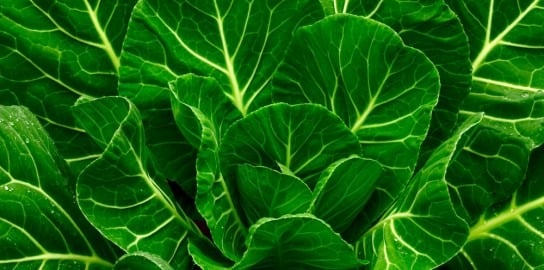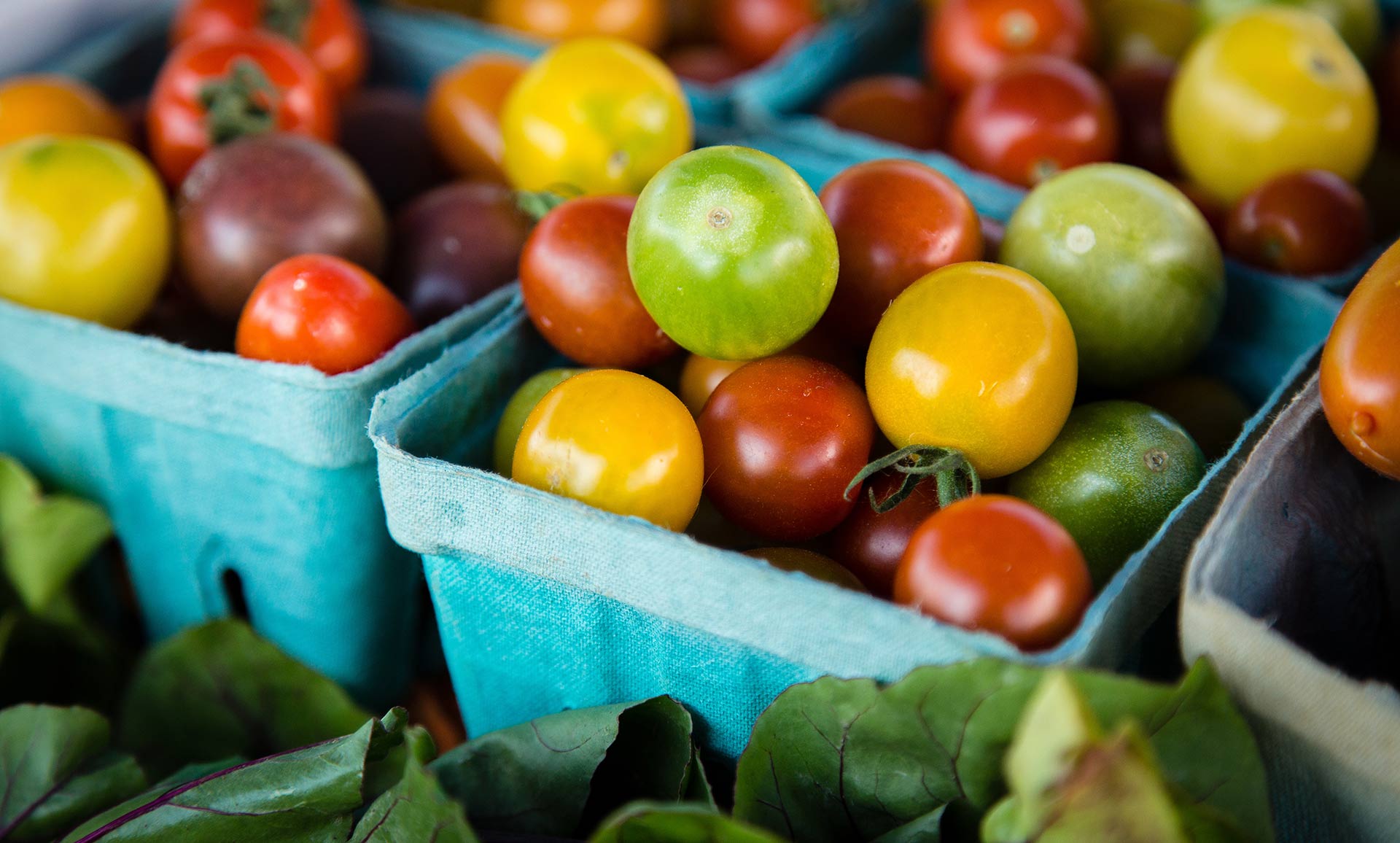The Foodprint of Tea
The United States, a country of coffee drinkers, is far less excited about tea. Where 44 percent of us drink two to three cups of coffee per day, only 25 percent of us consume two daily cups of tea, according to Solidaridad Asia, a civil society group pushing for sustainability in food supply chains. Still, some researchers have noticed a rising interest in tea’s purported health benefits; in 2021, 98,000 metric tons of black tea, and almost 17,000 metric tons of green tea, were imported into the U.S.
Unlike with coffee, though, we don’t hear much about how tea production rates from labor and environmental standpoints. “The U.S represents [almost six] percent of total consumption, so it’s not a huge market in terms of volume,” says Steffany Bermúdez, a policy analyst at the International Institute for Sustainable Development (IISD) by way of partial explanation as to why American consumers may take less of an interest in the origins of tea. Additionally, because most tea is aggregated to be sold at auction, “There isn’t actually a place where someone can go and check, where did this product come from?” says Chaumtoli Huq, a law professor at CUNY who studies the tea industry in Bangladesh.
That doesn’t mean there aren’t organizations seeking to address tea worker treatment and environmental concerns, or that there aren’t certifications you can seek out to know you’re buying a product that was produced with these issues in mind — Fairtrade International, Rainforest Alliance, and USDA Organic among them. But there’s a gap between what these certifications promise and what they are actually able to deliver.
Tea Basics
Tea comes from Camellia sinensis, a woody evergreen shrub that grows in tropical and sub-tropical places. There are two varieties: Camellia sinensis sinensis, which is native to China and whose leaves and buds are used mostly to make green teas; and Camellia sinensis assamica, native to the Assam region of India and mostly used to make black teas.
It’s the differences in processing that distinguish them. Green tea leaves may be briefly “withered” by exposure to air after plucking, to remove some moisture; they’re then dried to prevent oxidation. After tea leaves for black tea are plucked, they’re withered, rolled, oxidized for varying amounts of time, then dried.
There are also three other officially recognized types of tea: oolong, which is partially oxidized; un-oxidized white tea, which comes from young, unopened tea buds; and pu-erh, which, after it is dried, is fermented then compressed into bricks. The matcha used in matcha lattes and other beverages is simply powdered green tea. Herbal “teas” (like chamomile or mint) are technically tisanes, infusions made with non-Camellia sinensis leaves, bark, berries, seeds and so-forth.
Pesticide and Labor Issues
Tea is now grown in countries throughout Asia, Africa, Europe, North and South America. India, China, Sri Lanka and Kenya are the biggest global producers, and the vast majority of tea for home brewing (versus for brewing ready-to-drink beverages like Snapple iced tea) comes into the U.S. comes from these countries. Industrial-scale monoculture tea-growing proliferates, although it’s not the only farming method out there by a long shot.
China and Taiwan’s large farms may use plenty of chemical inputs in order to stave off pests and disease, which “ends up having consequences for water as well as human health,” says Anna Canning, director of communications for the Worker-driven Social Responsibility Network. But these countries also have small-scale tea cultivators, some of them centuries old, that may not rely on chemical inputs.
India, Bangladesh, Sri Lanka and Kenya are countries where the British “set up massive tea plantations for the explicit purpose of getting tea…to fuel their national consumption,” Canning continues. Here, “You still have very much that sort of colonial plantation model where workers are brought in from someplace else or are in some way marginalized within their societies — they’re lower class or from different ethnic groups” and although there have been some efforts to improve conditions for workers, they continue to be poor and powerless.
Chemical use can be an issue in these countries, too. Even though the UN Food and Agriculture Organization provides guidance on the use of pesticides by legacy British tea companies like Finlays, “Pesticides are regularly used on tea plantations,” says Huq. In Bangladesh, she’s witnessed workers — who are most at risk of health hazards from pesticides — spraying chemicals without benefit of protective gear.
In South Asia, Kenya, and Malawi, says Huq, “Tea workers are oftentimes the lowest paid of all categories of workers, particularly the women,” who work the processing side of tea, plucking leaves for a low weighted rate; men work on the production side, which is (marginally) better paid. “You have women working from early morning with no protection in terms of bugs and the natural elements” like heat, Huq says. In this system, whole families live and work on a plantation, often with poor access to clean water, food rations that leave them undernourished, and nowhere to go if a family member loses their job and is obliged to move off-plantation. Huq refers to this system as a “modern form of slavery.”
Any tea that’s grown to be sold under the USDA Organic label (or organic labels in the EU and elsewhere), almost entirely eschew chemical fertilizers and pesticides, making them a good choice when it comes to environmental concerns at least. But since demand for organic is lower than supply, tea farmers who grow for domestic markets rather than export — about 70 percent of tea globally, according to Bermúdez — may not seek certification because it’s not as valued in their home countries, although that’s beginning to change. A further wrinkle, points out Bermúdez, is that a large company can source sustainably produced tea for the U.S. market, but unsustainably produced tea for others, meaning that your dollars may well be supporting a company with a foothold in both.
“Depending on the market, [a company] can commercialize a tea line with more sustainable properties (certified tea) and in other regions, a line of conventional and cheaper tea that has been bought in auctions and blended (which makes traceability more difficult or almost impossible),” Bermúdez wrote in an email.
What Tea Certifications Tell Us
USDA Organic certification largely addresses ecological issues in tea growing methods, while Rainforest Alliance and Fairtrade International labeling have standards that focus both on labor and environmental issues. For example, Fairtrade International prohibits the use of some ag chemicals and compels farmers to work towards improving soil and water quality; it also has specifications related to housing and sanitation standards for workers. Rainforest Alliance certification tackles living wages, climate smart agriculture, and the conservation of biodiversity, among other practices; it also seeks to prevent and otherwise tackle forced labor in tea supply chains.
According to Bermúdez, Rainforest Alliance and USDA Certified Organic “allow farmers to differentiate themselves in the marketplace from conventional tea, in exchange for adopting more sustainable farming practices that build climate resilience or erosion control or lower pesticide use.” Farmers can label their products as meeting the standards of these certifications and charge a higher price for their tea. However, she notes that the cost of certification precludes many small-scale farmers from seeking certification.
Fairtrade International recently updated its standards to address what it admits were flaws in its original model. “[Their] own assessment of their standards in practice show little impact on wages or working conditions for workers,” wrote Canning in an email. Even the new standards “have not fundamentally changed the real power imbalances at the heart of the abuses.”
The organization’s certification is meant to guarantee minimum tea prices for farmers in exchange for their use of the label. But with the vast amount of Fairtrade International tea sold as conventional due to issues around demand, says Bermúdez, farmers don’t always get to take advantage of that price boost.
While Fairtrade International and Rainforest Alliance certifications may, in general, provide more benefits for farmers — such as making their operations more climate resilient due to the practices they’re obliged to adopt — they don’t tell the whole story of tea. Says Bermúdez, there are anecdotal reports that suggest “There are cases where these conditions or the standards have not been respected.” Additionally, many large companies may also work under their own sets of (opaque and voluntary) standards, without third-party verification or any real enforcement.
Canning believes Equal Exchange, with a commitment to purchasing organic-certified tea from small-scale farmers in India and Sri Lanka, does guarantee some environmental and worker benefit, with teabags that are readily available in supermarkets. However, consumers are becoming more aware of the use of the plastic that comprises nylon teabags and seals paper ones, which can leach into the environment and human bodies. Loose leaf tea is considered a more sustainable choice; Equal Exchange recently began selling that, too, making it a double win.
How to Do Your Own Research
Business & Human Rights Resource Centre, which Canning calls a “clearinghouse for human rights violation information,” doesn’t actively campaign for tea worker rights. But it does send tea companies self-evaluation forms, the responses to which it makes publicly available on its website.
Here you’ll find that Yogi Tea — which is a member of the international Ethical Tea Partnership that’s “increasingly focusing on gender equality projects and labor, such as training to enhance women’s nutrition,” wrote Bermúdez — doesn’t guarantee payment of living wages throughout its supply chain; that Twinings (another Ethical Tea Partnership member) does not work with unions; that Ahmed Tea doesn’t answer whether it supports a minimum wage, maternity leave, or sick leave for its workers; and that Starbucks, which was implicated in purchasing tea from Kenyan tea farms where women workers were sexually abused, is Rainforest Alliance certified and has a Global Human Rights Statement, highlighting the limitations of certifications generally.
Rather than buying tea from big brands, you can purchase from buyers sourcing directly from farmers. Though this comprises less than 2 percent of the tea market, “Direct buyers are more transparent on prices, they are more transparent on tea origins, they are generally more transparent on sustainability programs or projects that they are supporting,” says Bermúdez.
You can ask your local tea shop owners if they purchase straight from farmers, and what sorts of practices they use in production. Online, you’ll also find “a lot of small tea companies that are doing really interesting things,” says Canning. She calls out Young Mountain Tea, whose owner is working to develop a farmer-owned tea processing facility. Other options include In Pursuit of Tea, Red Blossom Tea and Rishi.
There are many companies that work directly with small farms in order to forefront labor and environmental concerns: Eco-Cha and Everlasting Teas, which sell loose leaf tea sourced from Taiwan; Spirit Tea, sourcing from Nepal, Japan, Thailand, among others; and Verdant Tea, working with small-scale Chinese growers. There are also small-scale, local companies that are transparent in their growing methods and that produce tea right here in the U.S., from Hawai’i to South Carolina — even New Jersey. Until tea industry labeling becomes more transparent, some of these teas will see you through.
Get the latest food news, from FoodPrint.
By subscribing to communications from FoodPrint, you are agreeing to receive emails from us. We promise not to email you too often or sell your information.
Top photo by Bogdan Wankowicz/Adobe Stock.
More Reading
In a beefy moment, beans?
November 4, 2025
Can extended producer responsibility programs push food companies to use sustainable packaging?
October 16, 2025
The meat industry smeared the Planetary Health Diet. Now its creators are back with more evidence.
October 10, 2025
The latest Global Plastics Treaty talks failed. Where does that leave the plastic pollution crisis?
September 23, 2025
For these cocoa farmers, sustainability and the price of beans are linked
September 17, 2025
This fall, get involved in one of these campus sustainability initiatives
August 26, 2025
What we’re reading this summer
July 17, 2025
A new book says tech-supported industrial ag will feed the world. Agroecologists would like a word.
July 9, 2025
Use a grocery store trip to teach kids environmental stewardship
July 7, 2025
Can rye growers get consumers and retailers excited about rye?
May 19, 2025



